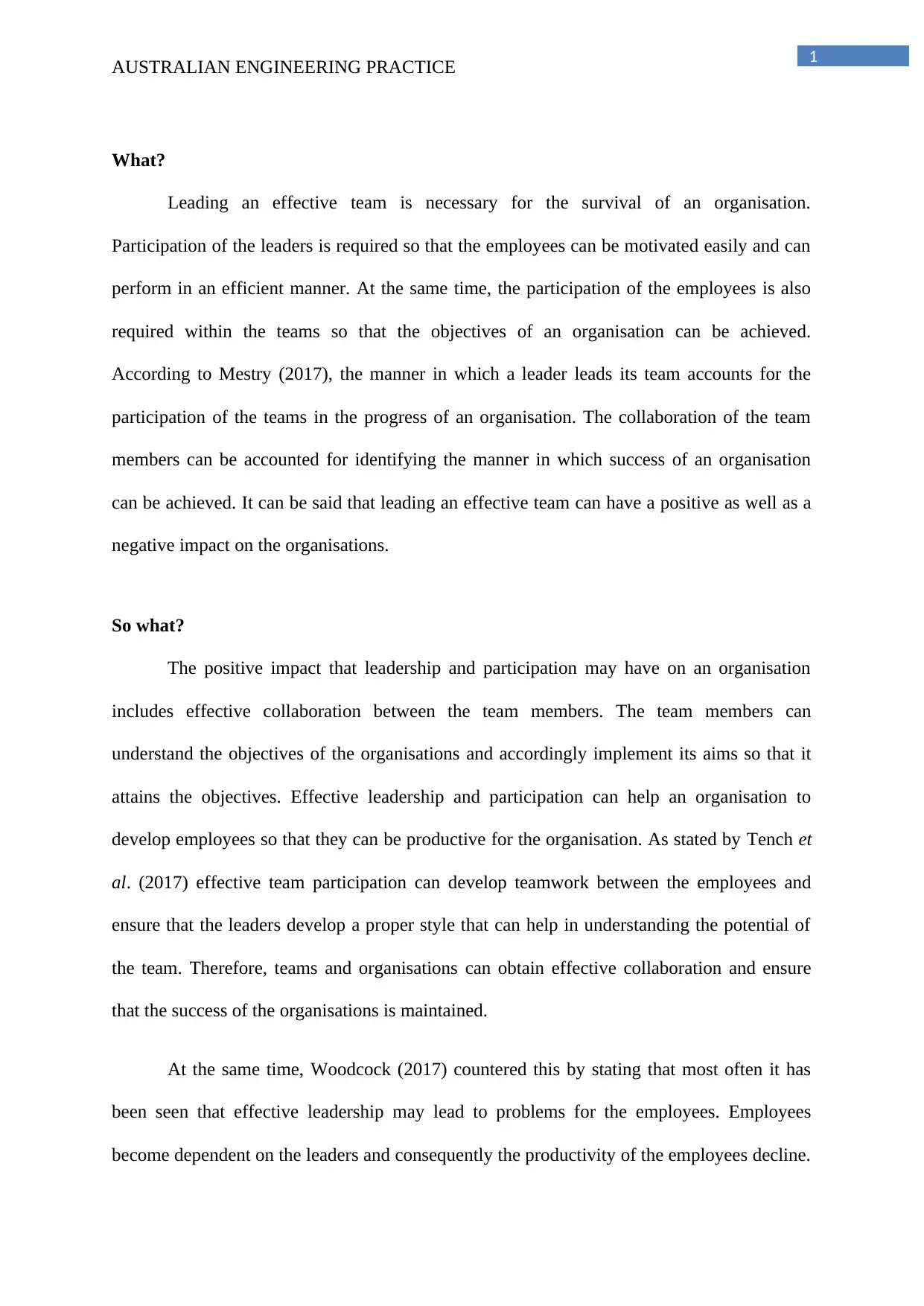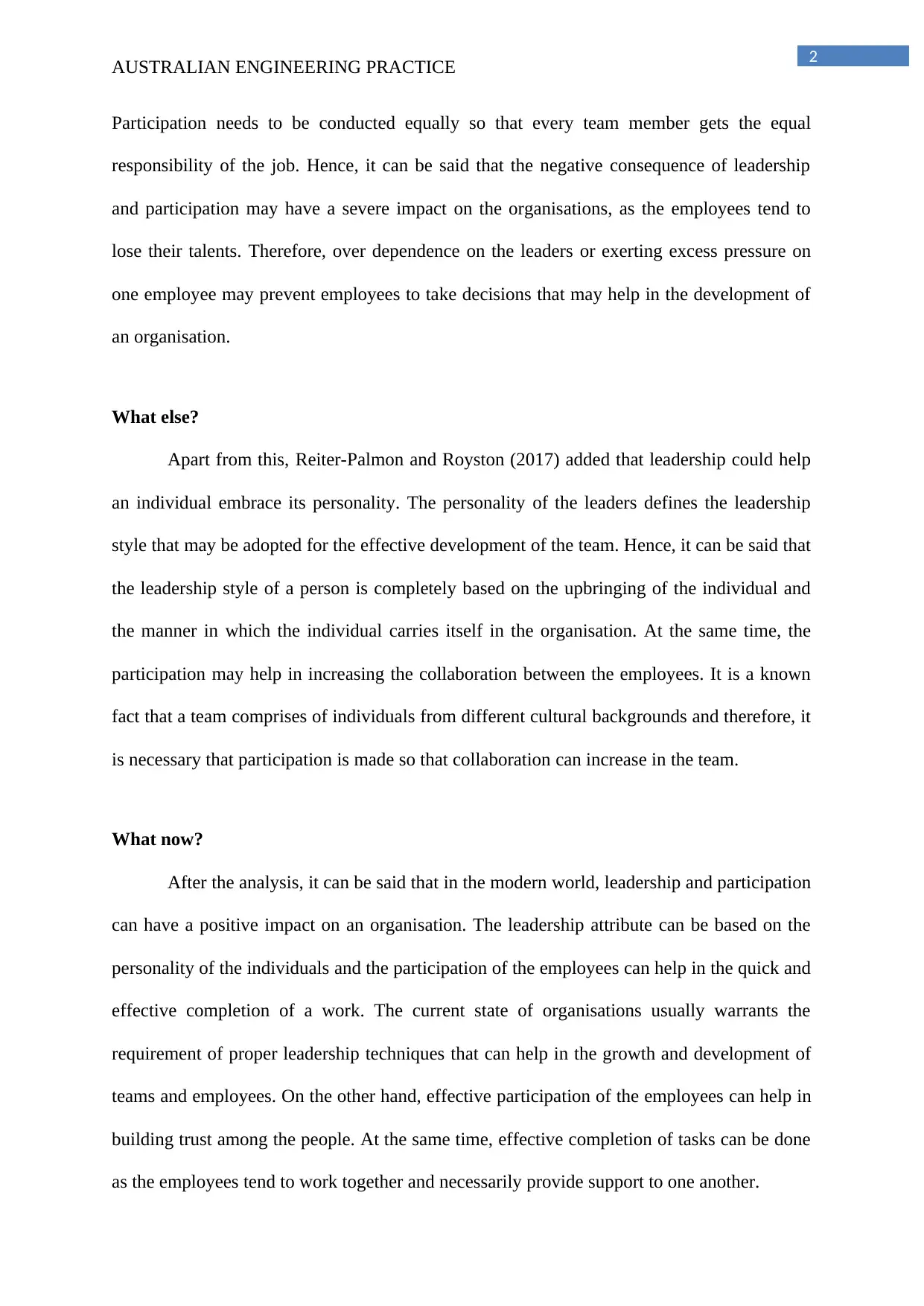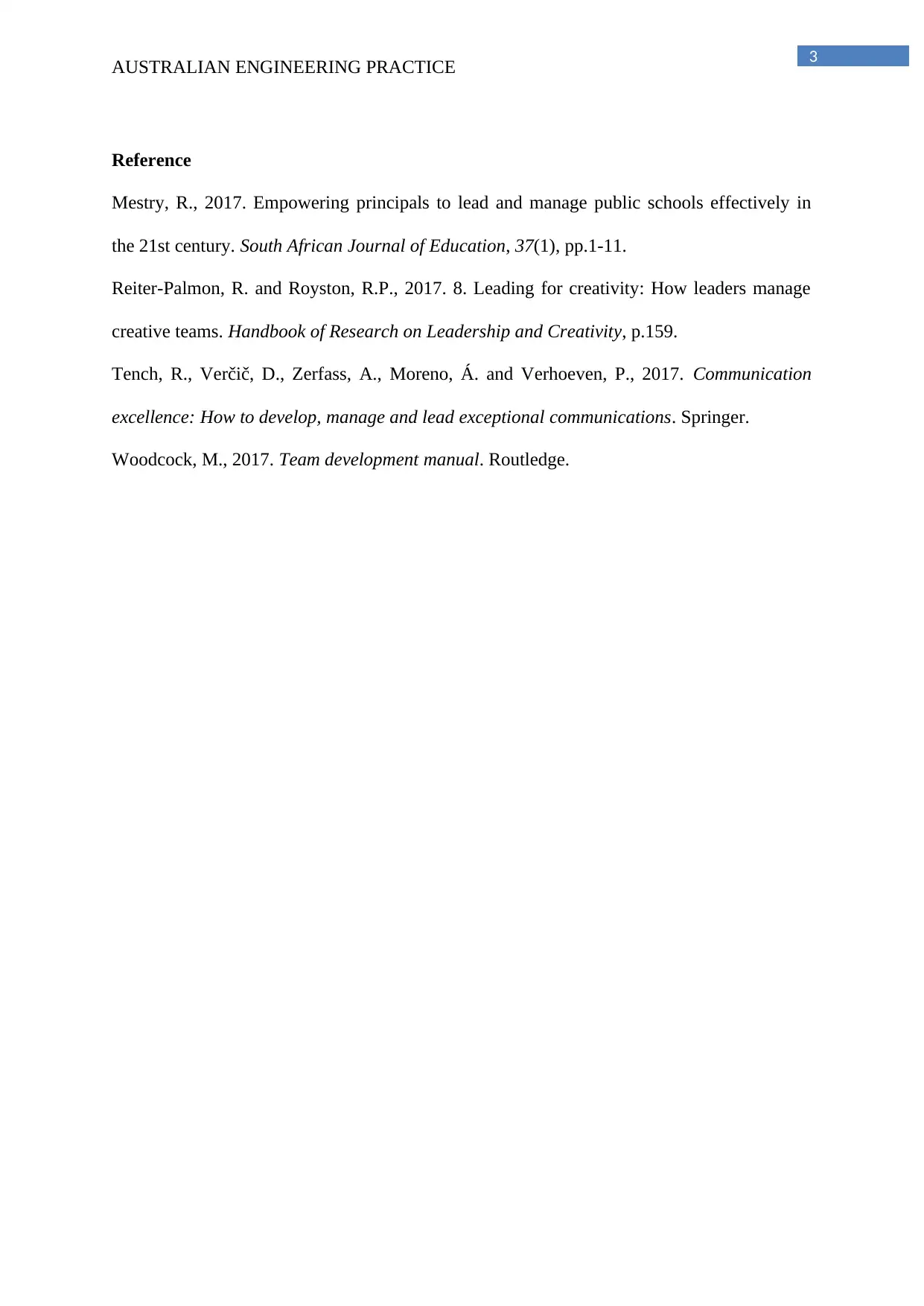Australian Engineering Practice: Leadership, Participation and Teams
VerifiedAdded on 2021/06/15
|4
|790
|20
Essay
AI Summary
This essay delves into the critical roles of leadership and employee participation within the context of Australian engineering practice. It emphasizes the significance of effective leadership in motivating teams, fostering collaboration, and achieving organizational objectives. The essay explores both the positive and negative impacts of leadership styles and employee involvement, citing various academic sources to support its arguments. It highlights how effective leadership can enhance teamwork, develop employee potential, and promote organizational success, while also acknowledging potential downsides such as employee dependence on leaders. The essay further examines the influence of individual personality on leadership styles and the importance of participation in fostering collaboration among diverse team members. Ultimately, the analysis concludes that in the modern engineering landscape, a combination of strong leadership and active employee participation is essential for driving growth, building trust, and ensuring the successful completion of tasks. The essay emphasizes the need for leadership techniques that nurture team and employee development.
1 out of 4











![[object Object]](/_next/static/media/star-bottom.7253800d.svg)